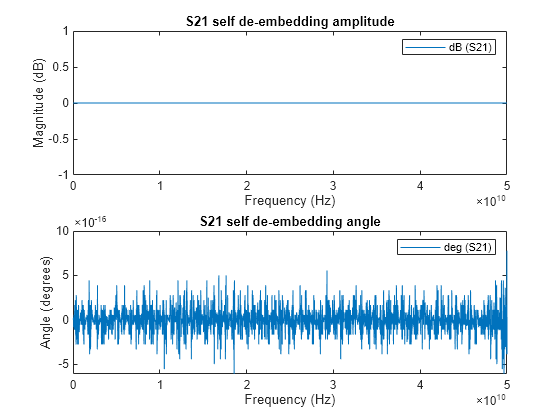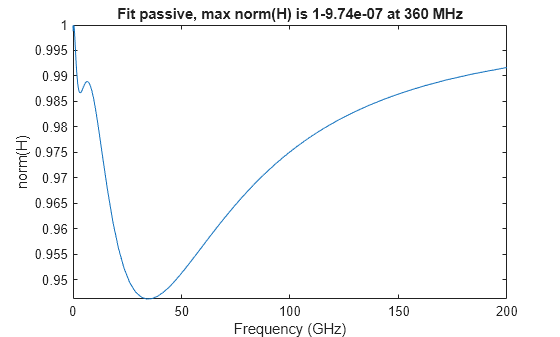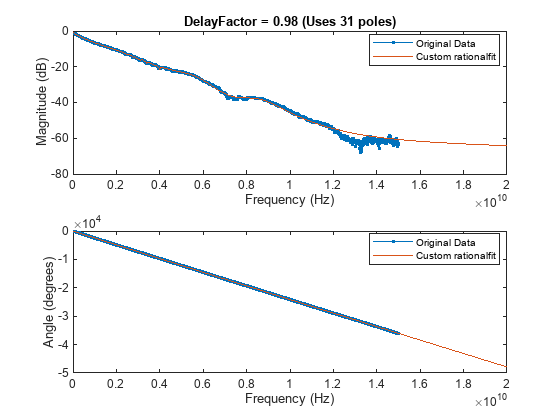Rational Fitting and Time Domain Analysis
Fit frequency domain data to rational function, calculate time, step,
impulse, and frequency response
Use the rational function to fit data defined in the frequency
domain with an equivalent Laplace transfer function. Using rational
function fitting you can create simple models for a required accuracy,
model order reduction, zero phase on extrapolation to DC, and causal
modeling system among other advantages.
Functions
Topics
- RF Model Objects
Discover the available RF model objects and learn their uses.



